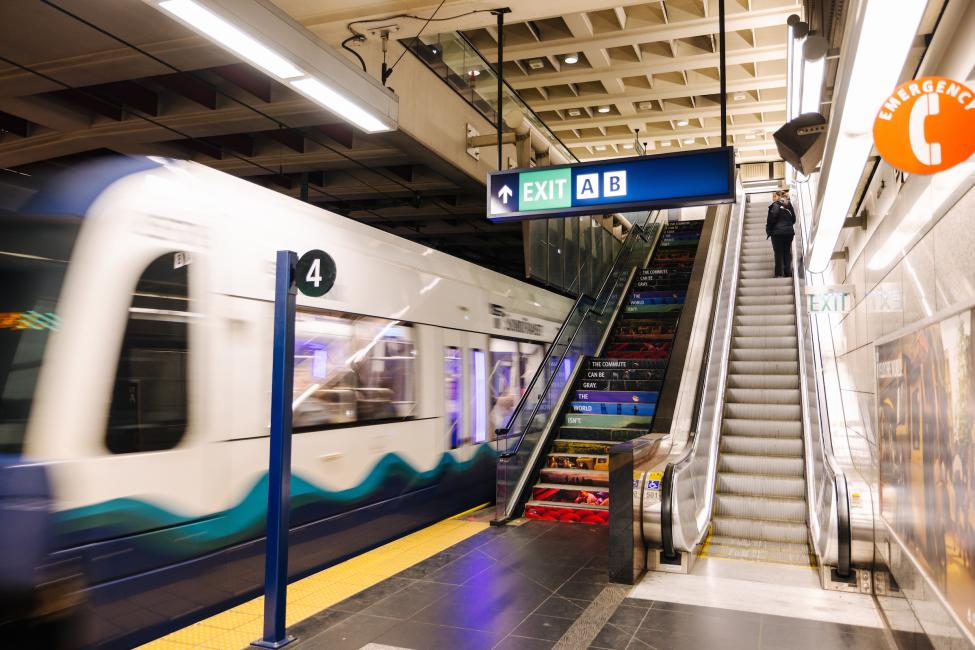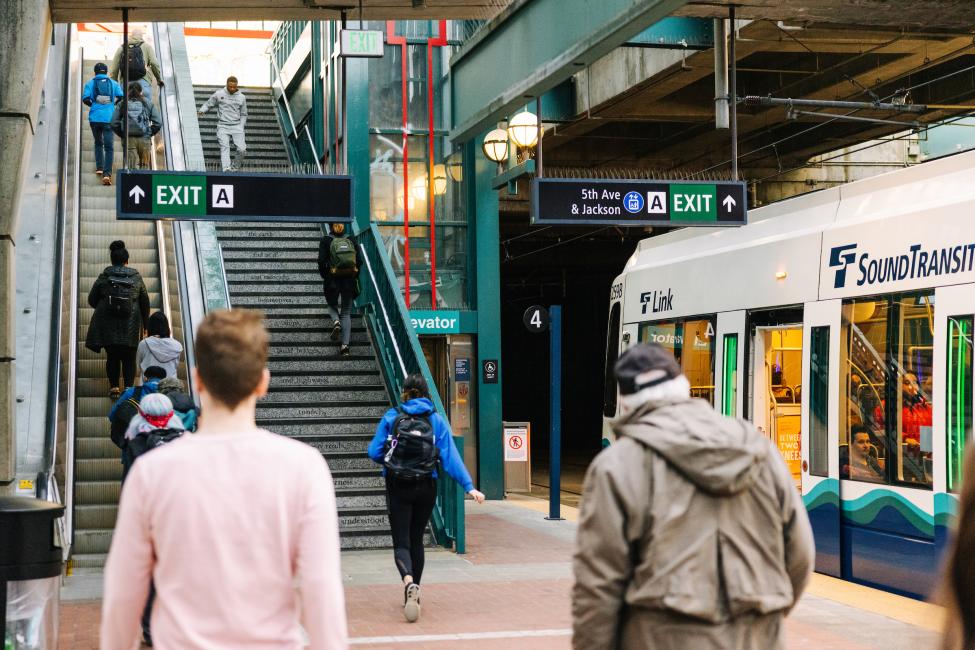It’s been more than two years since we’ve taken over the escalators and elevators—or as we often call them, vertical conveyances—in the Downtown Seattle Transit Tunnel.
We still have a ways to go to get things where we want them to be, but overall we’ve made great strides to ensure that the vertical conveyances are available when you need them.
As a reminder, when we took over management of the elevators and escalators in the tunnel in 2021, 28 of 58 of them were inoperable. We began by investing $8.7 million to replace critical components and safety upgrades.
We’ve succeeded in that goal. All 28 of the conveyances that were originally inoperable are now back up and running.
We have since had three conveyances suffer long-term outages—one due to mechanical failure, one due to water intrusion, and one due to vandalism. Because parts for the aging equipment are often hard to come by—all but one of the conveyances is beyond its expected service life—repairs often take much longer than we would like.
What does this mean in terms of availability?
Between 2021 and 2022:
- The number of out-of-service hours in the tunnel dropped by nearly 30 percent.
- Mechanical-related outages were down by 46 percent.
- That’s more than 44,000 hours of total service for the conveyances over the previous year.
Right now, our escalators are running at approximately 92 percent overall availability. That compares to just 30 percent when we took responsibility for the downtown stations.
That’s still short of our goal of 95 percent, but we’re getting close.
Elevators have been more problematic. Right now, elevators in the downtown stations are running 82 percent of the time. Misuse and vandalism often cause elevators, as well as escalators, to go out of service, sometimes for extended periods of time.
We’ve been stepping up our game even more to improve performance. Instead of letting conveyances stay out of service overnight, we revised our contract with our service vendor.
When we get notice of that a conveyance isn’t working during business hours, a repair team responds within an hour. Outside of business hours and on weekends, the repair team responds within two hours. That gets equipment back online quicker.
We are also installing equipment on all of the 195 vertical conveyances throughout the system so that we can monitor their operation in real time. That way, we don’t have to wait to be notified of an outage by someone on site.
The equipment itself will alert us when it becomes inoperable, and we can dispatch a repair team even more quickly. Right now, 15 conveyances have this monitoring in place, but it will be installed on all of the assets in our existing portfolio by the end of the year.
To help passengers when there is an outage, we are also looking at developing new station maps that will provide alternative routes for passengers to help them navigate to their destination.
The biggest change will early next year, when we begin replacing the aged conveyances in the downtown stations. We expect to go to the Board later this year to ask for approval to begin work on that project. We will provide you with another update then.
We know that if you need an escalator or elevator and it’s not working, you’re still going to be frustrated. We are frustrated too. We want to provide you with the level of service you should have. We’re working hard to build on the success we’ve had so far to ensure that we reach that goal.

